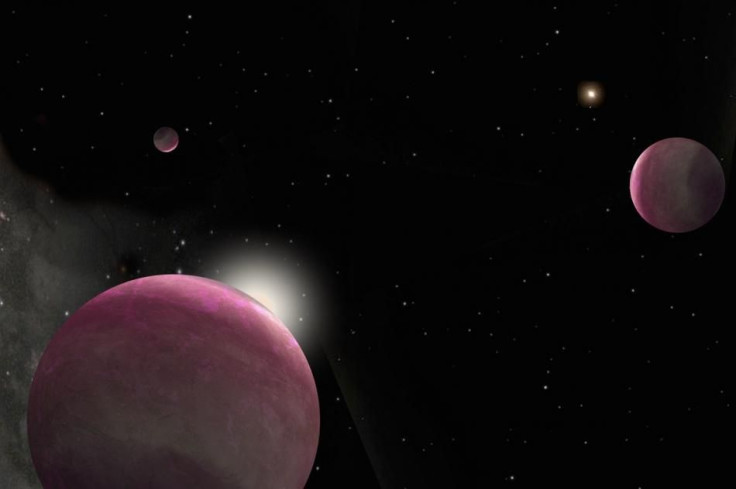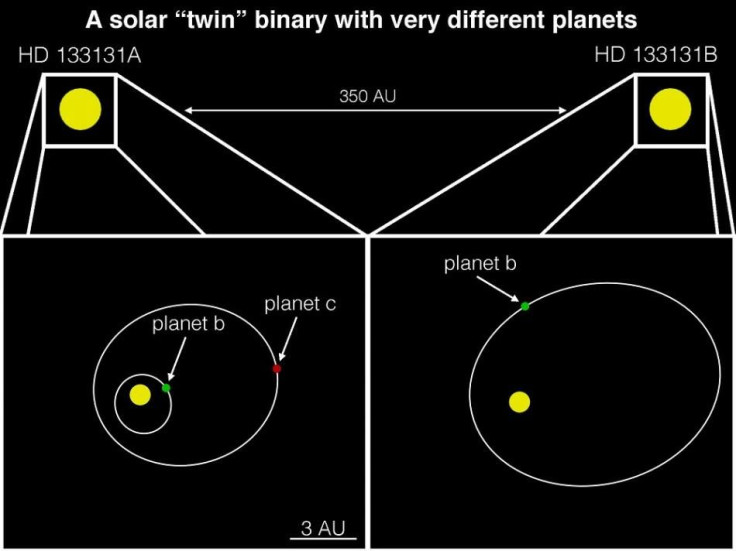Scientists Discover ‘Twin’ Stars Hosting 3 Giant Jupiter-Sized Exoplanets

Adding to the ever-increasing mysteries of the universe, a team of scientists has discovered three giant exoplanets in a binary star system consisting of stellar “twins” that are siblings of our sun. Researchers also said that such a binary system, in which both stars host planets, hasn’t been observed before.
In the newly discovered binary star system, one star — named HD 133131A — hosts two planets and the other — named HD 133131B — hosts the third. The latest findings, published in a study that appeared in the latest version of the Astronomical Journal on Monday, are expected to help scientists better understand the influence that giant planets like Jupiter have over a solar system’s architecture.
Compared to the most common exoplanets that are larger than Earth but smaller than Neptune or Uranus, Jupiter-sized exoplanets are rare. Because Jupiter’s gravitational pull likely had a huge influence on our solar system’s architecture during its formation, scientists believe that the lack of Jupiter-like plants could explain why our solar system is different from all the others found in the universe so far.
“We are trying to figure out if giant planets like Jupiter often have long and, or eccentric orbits,” Johanna Teske of Carnegie Institution for Science, Washington, and the study’s lead author, said in a statement. “If this is the case, it would be an important clue to figuring out the process by which our Solar System formed, and might help us understand where habitable planets are likely to be found.”

According to the researchers, one of the two planets hosted by HD 133131A is about one and a half times Jupiter’s mass while the other planet is just over half of Jupiter’s mass. On the other hand, the planet hosted by HD 133131B is the biggest one with a mass at least 2.5 times that of Jupiter.
One of the factors that make the binary system unusual is the distance between the two stars that are separated by only 360 astronomical units (AU), which is extremely close for twin stars with planets orbiting them. According to scientists, the next closest binary system that hosts planets has stars that are about 1,000 AU apart. One AU is the mean distance between Earth and the sun, which is about 150 million km or 93 million miles.
“The probability of finding a system with all these components was extremely small, so these results will serve as an important benchmark for understanding planet formation, especially in binary systems,” Teske said in the statement.
© Copyright IBTimes 2024. All rights reserved.






















